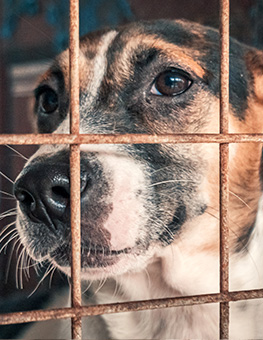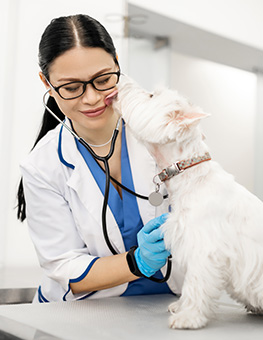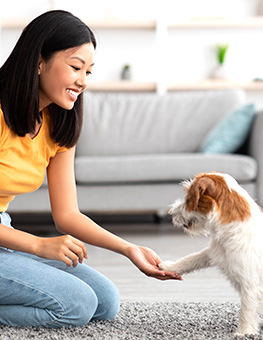Helping Your Dog Overcome Separation Anxiety
While most dogs can handle the hours of separation, others can't.
The Humane Society lists the most common scenarios that can trigger separation anxiety.
- Dogs accustomed to constant human companionship then left alone for the first time.
- Dogs who have suffered a traumatic event (from their viewpoint), such as time at a shelter or boarding kennel.
- A change in the family’s routine or structure or the loss of a family member or another pet.
Some symptoms include:
- Destructive or inappropriate behavior such as digging, scratching at doors, howling, and urination that occurs only when your dog is separated from you.
- Your dog becomes unduly agitated and may drool, pace, or bark as you prepare to leave.
- Your dog remains anxious even if other family members remain in the house. For this reason, adding another pet to the home rarely solves the problem.
- After you return, your dog spends hours glued to your side, refusing to leave for even a few moments.
Separation anxiety has been the cause of many chewed and torn-up households, but even worse, it's led to many abandoned dogs. If your pet suffers from severe anxiety when you're gone for the day - or even for a few hours of errands - take into consideration some of these dog training tips to help you both achieve peace of mind.
- Don't make it a big deal. Treat all exits and entrances casually. Don't make a big ordeal out of saying goodbye to your dog and he won't feel as worked up or have as much time to build anxiety before you're out the door.
- Leave a scent. Whether it's a pillow you've been sleeping on or an entire hamper of dirty clothes, leave some sort of comforting scent for your dog. Because he or she perceives the world so acutely through a sense of smell, the right aroma can have a sedative effect on any anxiety.
- Large-space confinement. Don't crate your pet, but make a room where he or she won't suffer as much from anxiety induced urination or chewing. Make the space as comfortable as you can and be sure to install barriers (child gates work well) that can't be jumped over.
- Work on being in separate rooms. Take small steps. While you're at home, work on having your dog stay in a different room than you. Start by backing off and then gradually moving out of your pet's vision. Seeing that out-of-sight doesn't mean gone forever can help lessen his or her attachment.
- Medicate. Your veterinarian can prescribe safe, anti-anxiety medication that is non-sedating and will help him or her get through the day. These medications are often used in conjunction with behavior modification and can greatly increase the chances of success. A consultation with your veterinarian or a veterinary behaviorist is a good place to start.
This article is brought to you by the pet behavior experts at Hartz. When it comes to training your dog and cat, our knowledge and experience is guaranteed to make the process easy, smooth and fun!




















